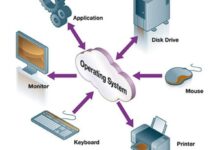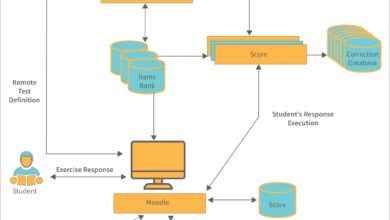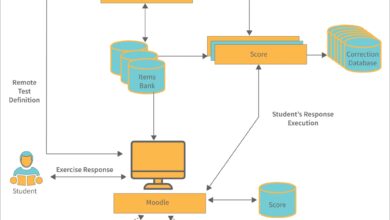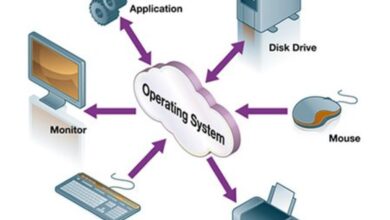System Files 101: 7 Powerful Secrets You Must Know
Ever wondered what makes your computer actually work behind the scenes? It’s not magic—it’s system files. These hidden digital gears keep your OS running smoothly, quietly managing everything from boot-up to app execution. Let’s pull back the curtain.
What Are System Files and Why They Matter

System files are the backbone of any operating system. They are essential components that enable your computer to start, run applications, manage hardware, and maintain stability. Without them, your device would be nothing more than expensive hardware with no functionality.
The Definition of System Files
System files are pre-installed, protected files that form the core structure of an operating system. These include configuration files, dynamic link libraries (DLLs), kernel modules, boot loaders, and device drivers. They are typically stored in protected directories such as C:WindowsSystem32 on Windows or /etc, /bin, and /sbin on Linux.
- They are automatically loaded during system startup.
- They are often hidden from regular users to prevent accidental deletion.
- They are digitally signed to ensure authenticity and integrity.
“System files are like the DNA of your operating system—they contain the instructions that define how your computer behaves.” — TechTarget, https://www.techtarget.com
Different Types of System Files
Not all system files serve the same purpose. They vary by function, location, and operating system. Here are the most common types:
- Boot Files: Files like
ntoskrnl.exe(Windows) orvmlinuz(Linux) that load the kernel into memory. - Configuration Files: Files such as
boot.ini,registry hives, or/etc/fstabthat store system settings. - Dynamic Link Libraries (DLLs): Shared libraries used by multiple programs (e.g.,
kernel32.dll). - Device Drivers: Files that allow the OS to communicate with hardware (e.g.,
ndis.sys).
Each of these plays a critical role in ensuring seamless operation. Tampering with them can lead to system instability or complete failure.
System Files Across Operating Systems
While the concept of system files is universal, their implementation varies across platforms:
- Windows: Uses a proprietary file structure with heavy reliance on the Windows Registry and DLLs. Critical files are located in
C:Windowsand protected by TrustedInstaller. - macOS: Based on Unix, macOS stores system files in
/System,/Library, and/usr. SIP (System Integrity Protection) prevents unauthorized modifications. - Linux: Open-source nature allows greater visibility. System files are scattered across directories like
/bin,/sbin,/lib, and/etc. Permissions are managed via chmod and chown.
Understanding these differences helps users and administrators troubleshoot issues more effectively.
How System Files Control Your Operating System
System files aren’t just passive components—they actively control how your OS behaves. From the moment you press the power button, they orchestrate a complex sequence of events that bring your machine to life.
The Boot Process and System Files
When you turn on your computer, a chain of system files is executed in a precise order:
- The BIOS/UEFI firmware performs a Power-On Self-Test (POST).
- The bootloader (e.g.,
bootmgrorGRUB) is loaded from the Master Boot Record (MBR) or EFI partition. - The kernel file (
ntoskrnl.exeorvmlinuz) is loaded into RAM. - System services and drivers are initialized.
If any of these system files are missing or corrupted, the boot process halts, often resulting in a Blue Screen of Death (BSOD) or kernel panic.
Role of the Windows Registry
In Windows, the registry is a hierarchical database that stores low-level settings for the OS and applications. It’s composed of several hive files such as:
SOFTWARESYSTEMSAMSECURITY
These files are located in C:WindowsSystem32config and are loaded into memory during startup. They define everything from user preferences to driver configurations. Editing them manually via regedit can be powerful—but risky.
“A single incorrect registry entry can render a Windows system unbootable.” — Microsoft Docs, https://learn.microsoft.com
System Files and Hardware Management
System files act as intermediaries between software and hardware. Device drivers—special types of system files—translate OS commands into signals that hardware can understand. For example:
dxgkrnl.sysmanages graphics rendering in Windows.ahci.syscontrols SATA storage devices.netwtw04.syshandles Intel wireless network adapters.
When you plug in a new device, the OS searches for the appropriate driver (a system file) to enable communication. If it’s missing, the device won’t function.
Common Threats to System Files
Despite their critical role, system files are vulnerable to various threats. Malware, user errors, and hardware failures can all compromise their integrity.
Malware Targeting System Files
Malicious software often targets system files to gain deep access or disable security features. Examples include:
- Rootkits: Hide in system files to evade detection.
- Ransomware: Encrypts or deletes critical files to extort money.
- Virus Infections: Overwrite or corrupt DLLs and executables.
For instance, the CIH virus (also known as Chernobyl) famously overwrote the BIOS firmware, rendering computers unusable. Modern malware like TrickBot modifies system files to disable Windows Defender.
User-Induced Damage
Sometimes, the biggest threat is the user. Common mistakes include:
- Accidentally deleting files from
System32. - Disabling critical services via
msconfig. - Editing the registry without backups.
One infamous example is the viral “delete system32” joke, which led many inexperienced users to damage their systems. Microsoft even added a warning in Windows 10 that triggers when someone tries to access C:WindowsSystem32 from certain contexts.
Hardware and Disk Failures
Physical issues can also corrupt system files. Bad sectors on a hard drive, failing SSDs, or sudden power outages during updates can leave critical files incomplete or unreadable. This often results in error messages like:
- “Windows failed to start. A recent hardware or software change might be the cause.”
- “File: WindowsSystem32ntoskrnl.exe – status: 0xc000000f”
- “Operating System not found”
Regular disk checks and backups can mitigate these risks.
How to Protect and Repair System Files
Given their importance, protecting system files is crucial. Fortunately, modern operating systems come with built-in tools to verify and restore them.
Using Windows System File Checker (SFC)
The System File Checker (SFC) is a command-line utility that scans for and repairs corrupted system files. To use it:
- Open Command Prompt as Administrator.
- Type
sfc /scannowand press Enter. - Wait for the scan to complete (can take 15–30 minutes).
- If issues are found, SFC will attempt to fix them using cached copies from
%WinDir%System32dllcache.
This tool is highly effective for resolving common boot and performance issues. According to Microsoft, SFC can repair over 90% of file corruption cases caused by minor disk errors or software conflicts.
Deployment Image Servicing and Management (DISM)
If SFC fails, the next step is DISM. This tool repairs the Windows image itself, which SFC relies on. The command sequence is:
DISM /Online /Cleanup-Image /CheckHealthDISM /Online /Cleanup-Image /ScanHealthDISM /Online /Cleanup-Image /RestoreHealth
DISM downloads replacement files from Windows Update if necessary. It’s especially useful after major system updates or when the component store is damaged.
“DISM is the first line of defense when SFC can’t resolve system file issues.” — How-To Geek, https://www.howtogeek.com
Third-Party Tools for System File Integrity
Beyond built-in tools, several third-party utilities can monitor and protect system files:
- CCleaner: Scans for registry errors and temporary file buildup.
- Malwarebytes: Detects rootkits that hide in system directories.
- Glary Utilities: Offers a system restore module and file integrity checker.
While useful, these tools should be used cautiously. Some may recommend deleting files that are actually essential, so always verify changes.
Best Practices for Managing System Files
Proper management of system files ensures system stability and security. Whether you’re a casual user or a system administrator, following best practices is essential.
Never Modify System Files Manually
Unless you’re a developer or IT professional with a clear understanding of the consequences, avoid editing system files directly. This includes:
- Renaming or deleting files in
System32. - Editing the registry without a backup.
- Replacing DLLs with versions from unknown sources.
Even small changes can cascade into major system failures. If you must make changes, always create a system restore point first.
Enable System Protection and Restore Points
Windows System Restore creates snapshots of system files, registry settings, and installed programs. To enable it:
- Go to Control Panel > System and Security > System.
- Click “System Protection” on the left.
- Select your drive and click “Configure.”
- Choose “Turn on system protection” and set a disk space limit.
Once enabled, Windows automatically creates restore points before major changes like updates or software installations. If something goes wrong, you can roll back to a working state.
Regular Backups and Disk Maintenance
Prevention is better than cure. Regular maintenance includes:
- Running
chkdskto fix file system errors. - Using
defrag(or Optimize Drives) to improve performance. - Scheduling full system backups via File History or third-party tools like Macrium Reflect.
Cloud backups (e.g., OneDrive, Google Drive) are great for personal files, but they don’t back up system files. Use image-based backups for complete recovery options.
Advanced: Accessing and Analyzing System Files
For developers, security researchers, and IT pros, understanding how to analyze system files is a powerful skill. This section dives into advanced techniques.
Using Command-Line Tools
Windows and Linux offer powerful command-line utilities to inspect system files:
- sigcheck (Sysinternals): Verifies digital signatures of executables.
- strings: Extracts readable text from binary files (useful for malware analysis).
- file (Linux): Identifies file types, even if extensions are missing.
For example, running sigcheck -v kernel32.dll shows its publisher, version, and whether it’s signed by Microsoft.
Registry Analysis and Monitoring
The Windows Registry is a treasure trove of system activity. Tools like:
- Process Monitor (ProcMon): Tracks real-time registry and file system access.
- Regshot: Takes snapshots of the registry before and after changes.
These are invaluable for diagnosing software conflicts, startup issues, or unauthorized changes.
“ProcMon is the microscope of Windows troubleshooting.” — Nir Sofer, Software Developer
Reversing System Binaries (Ethically)
Reverse engineering system files is legal for educational and security purposes. Tools like:
- IDA Pro
- Ghidra (NSA-developed, open-source)
- OllyDbg
allow experts to analyze how system components work. However, this requires deep knowledge of assembly language and operating system internals. Always comply with EULA and copyright laws.
Future of System Files: Trends and Innovations
As technology evolves, so do system files. Modern operating systems are rethinking how core components are stored, updated, and protected.
Immutable Operating Systems
New OS designs like Fedora Silverblue and Windows Core OS use immutable system partitions. In these models:
- System files are read-only.
- Updates are applied atomically (all at once or rolled back).
- User data is separated from the OS.
This prevents corruption and makes systems more secure and reliable. If an update fails, the system reverts to the previous state seamlessly.
Containerization and System Isolation
Technologies like Docker and Windows Containers isolate applications from the host OS. This reduces reliance on shared system files and minimizes conflicts. For example:
- A containerized app brings its own libraries instead of using system DLLs.
- System files remain untouched, reducing the risk of “DLL hell.”
This trend is especially popular in enterprise environments and cloud computing.
AI-Powered System Monitoring
Artificial intelligence is being integrated into system maintenance. Tools like:
- Windows Autopatch
- Microsoft Defender for Endpoint
- Google’s AI-driven Chrome OS updates
use machine learning to predict failures, detect anomalies in system files, and automate repairs. In the near future, your OS might fix corrupted files before you even notice a problem.
What are system files?
System files are essential components of an operating system that manage core functions like booting, hardware communication, and system configuration. They include executables, libraries, drivers, and configuration files stored in protected directories.
Can I delete system files to free up space?
No. Deleting system files can cripple your operating system, prevent booting, or cause data loss. Use disk cleanup tools instead to remove temporary files safely.
How do I know if my system files are corrupted?
Symptoms include frequent crashes, BSODs, missing DLL errors, or failure to boot. Run sfc /scannow in Windows to check for corruption.
Are system files the same across all computers?
No. While the core functions are similar, system files vary by OS (Windows, macOS, Linux), version, and hardware configuration. Drivers, for example, are specific to your devices.
Can malware hide in system files?
Yes. Sophisticated malware like rootkits can inject code into legitimate system files or replace them entirely. Use antivirus software with real-time protection to detect such threats.
System files are the invisible foundation of your computing experience. From the moment you power on your device to the apps you use daily, they’re working behind the scenes to keep everything running. While they’re protected and hidden for good reason, understanding their role empowers you to troubleshoot issues, enhance security, and make informed decisions. Whether you’re a casual user or a tech pro, respecting system files is key to a stable, secure, and efficient system. As operating systems evolve with immutability, containerization, and AI, the way we interact with system files will change—but their importance will never diminish.
Further Reading:









